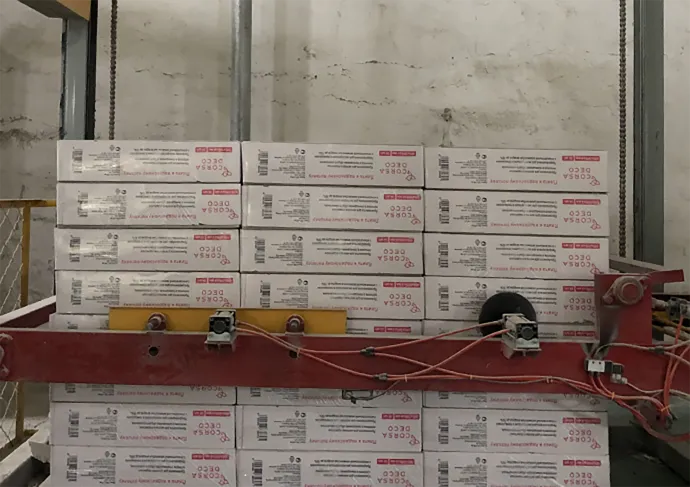- Afrikaans
- Albanian
- Amharic
- Arabic
- Armenian
- Azerbaijani
- Basque
- Belarusian
- Bengali
- Bosnian
- Bulgarian
- Catalan
- Cebuano
- Corsican
- Croatian
- Czech
- Danish
- Dutch
- English
- Esperanto
- Estonian
- French
- German
- Greek
- Hindi
- Indonesian
- irish
- Italian
- Japanese
- Korean
- Lao
- Malay
- Myanmar
- Norwegian
- Norwegian
- Polish
- Portuguese
- Romanian
- Russian
- Serbian
- Spanish
- Swedish
- Thai
- Turkish
- Ukrainian
- Uzbek
- Vietnamese
Δεκ . 05, 2024 09:17 Back to list
How to Properly Install a Ceiling Access Panel for Easy Maintenance
Installing a Ceiling Access Panel A Comprehensive Guide
The installation of a ceiling access panel is a crucial task in both residential and commercial projects, providing convenient access to plumbing, electrical systems, or HVAC components concealed within the ceiling. This guide will walk you through the process of selecting, preparing, and installing a ceiling access panel, ensuring optimal functionality and aesthetic appeal.
Understanding Ceiling Access Panels
Ceiling access panels serve as removable sections in the ceiling, allowing for easy access to hidden systems that may require maintenance or repair. These panels come in various materials, including metal, plastic, and drywall, and are available in different sizes to fit your specific needs. Choosing the right type of access panel is essential, as it should accommodate the systems’ requirements while blending seamlessly with your existing ceiling design.
How to Choose the Right Access Panel
1. Material The choice of material is integral to the functionality and durability of the panel. Metal panels provide superior strength and durability, making them ideal for high-traffic areas. Plastic panels are lightweight and easy to install, while drywall panels can be painted over, integrating them flawlessly into the ceiling.
2. Size Measure the space where the panel will be installed carefully. Access panels are available in various standard sizes, but custom sizes can be ordered if necessary. Ensure that the size you choose allows for adequate access to the systems behind it.
3. Style Consider the aesthetic aspect of the panel. Some models come with a locking mechanism for added security, while others offer a flush design that conceals the panel when closed.
Preparing for Installation
Once you've selected the appropriate access panel, the next step involves preparing your installation area. Here’s how
1. Gather Tools and Materials Ensure you have all necessary tools, including a utility knife, tape measure, level, drill, screws, and safety goggles.
2. Locate the Area for Installation Identify the precise location in the ceiling that will allow access to the required systems. Check for pipes, wires, or ducts to avoid any accidental damage.
install ceiling access panel

3. Mark the Cutout Using the dimensions of your access panel, mark a square or rectangular outline on the ceiling where the panel will be installed. Double-check your measurements before proceeding.
Installing the Access Panel
Follow these steps for a straightforward installation
1. Cut the Ceiling Opening Use a utility knife to carefully cut along the marked outline. Make sure to cut straight and avoid any damage to surrounding areas.
2. Prepare the Panel If your access panel requires framing, install the supporting framework inside the cutout to secure the panel’s edges.
3. Insert the Panel Place the access panel into the opening. Ensure it fits snugly and is level. If your panel has mounting clips or screws, follow the manufacturer’s instructions to secure it in place.
4. Finish the Installation Once mounted, you may paint or finish the panel to match the surrounding ceiling, making it blend seamlessly into the overall look of the room.
Testing and Maintenance
After installation, it’s important to conduct a quick test to ensure that the panel operates as intended. Open and close the panel several times, making sure that it’s easy to access and that it closes securely. Regular inspections should be conducted to check for any wear and tear, especially if the panel is frequently accessed.
Conclusion
Installing a ceiling access panel can seem daunting, but with the right tools and careful preparation, it becomes a manageable task that enhances the functionality of your space. Whether you're a homeowner looking to install a panel in your home or a contractor working on a commercial project, following these steps ensures a professional outcome that meets your access needs. By investing time and effort into this installation, you not only facilitate easier maintenance but also improve the longevity of the systems housed within your ceilings.
-
Transform Interiors with PVC Gypsum Ceiling: A Stylish, Durable, and Moisture-Resistant SolutionNewsMay.19,2025
-
The Smart Interior Upgrade: Discover the Durability and Versatility of Gypsum Ceiling Access Panel SolutionsNewsMay.19,2025
-
The Smart Choice for Interior Design: Discover the Value of PVC Gypsum Ceiling SolutionsNewsMay.19,2025
-
Mineral Fiber Ceiling Tiles: The Smart Blend of Performance and AestheticsNewsMay.19,2025
-
Mineral Fiber Ceiling Tiles: The Superior Choice Over Gypsum for Sound and Fire SafetyNewsMay.19,2025
-
Mineral Fiber Ceiling Tiles: Eco-Friendly Strength and Style for Every CeilingNewsMay.19,2025







